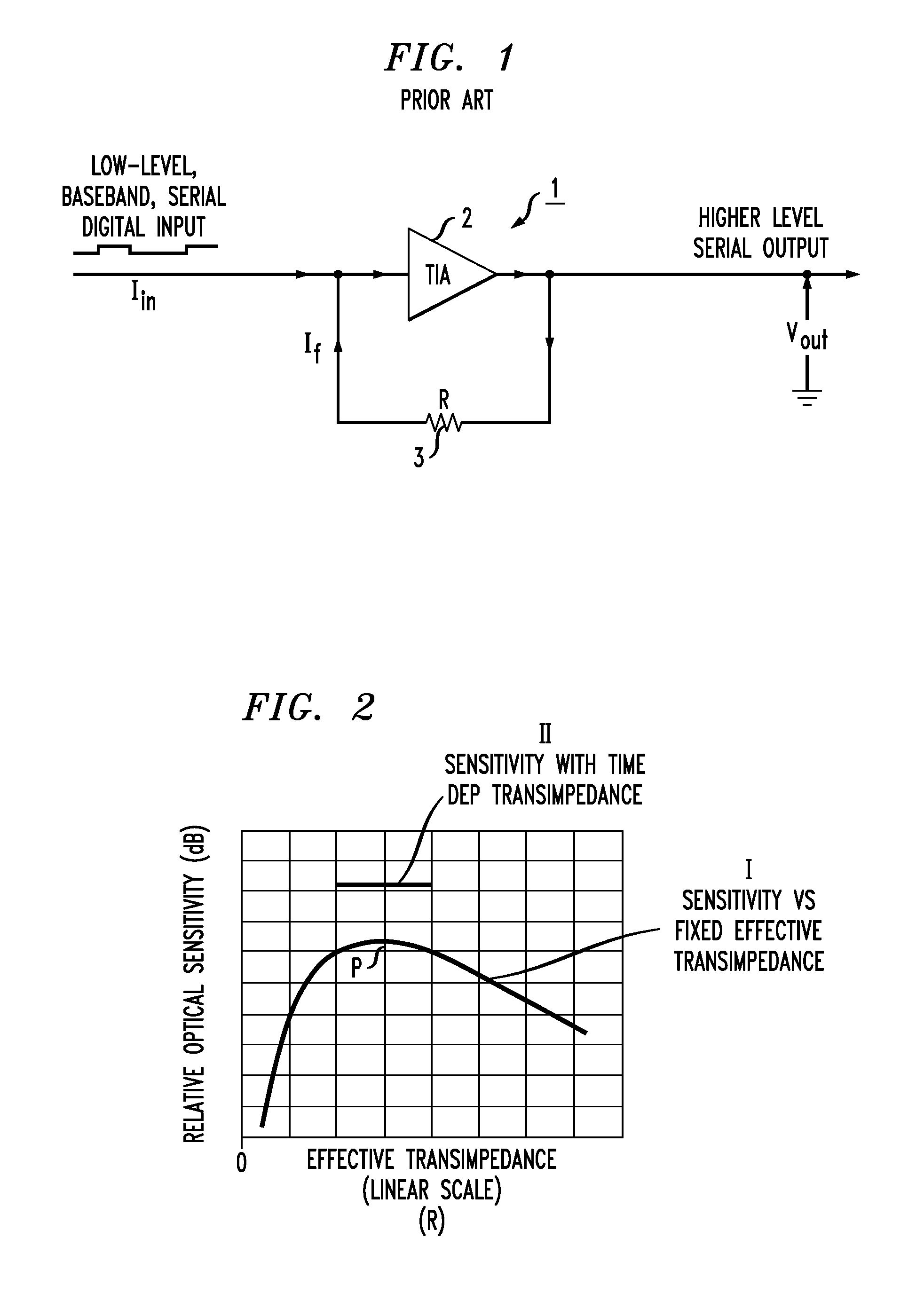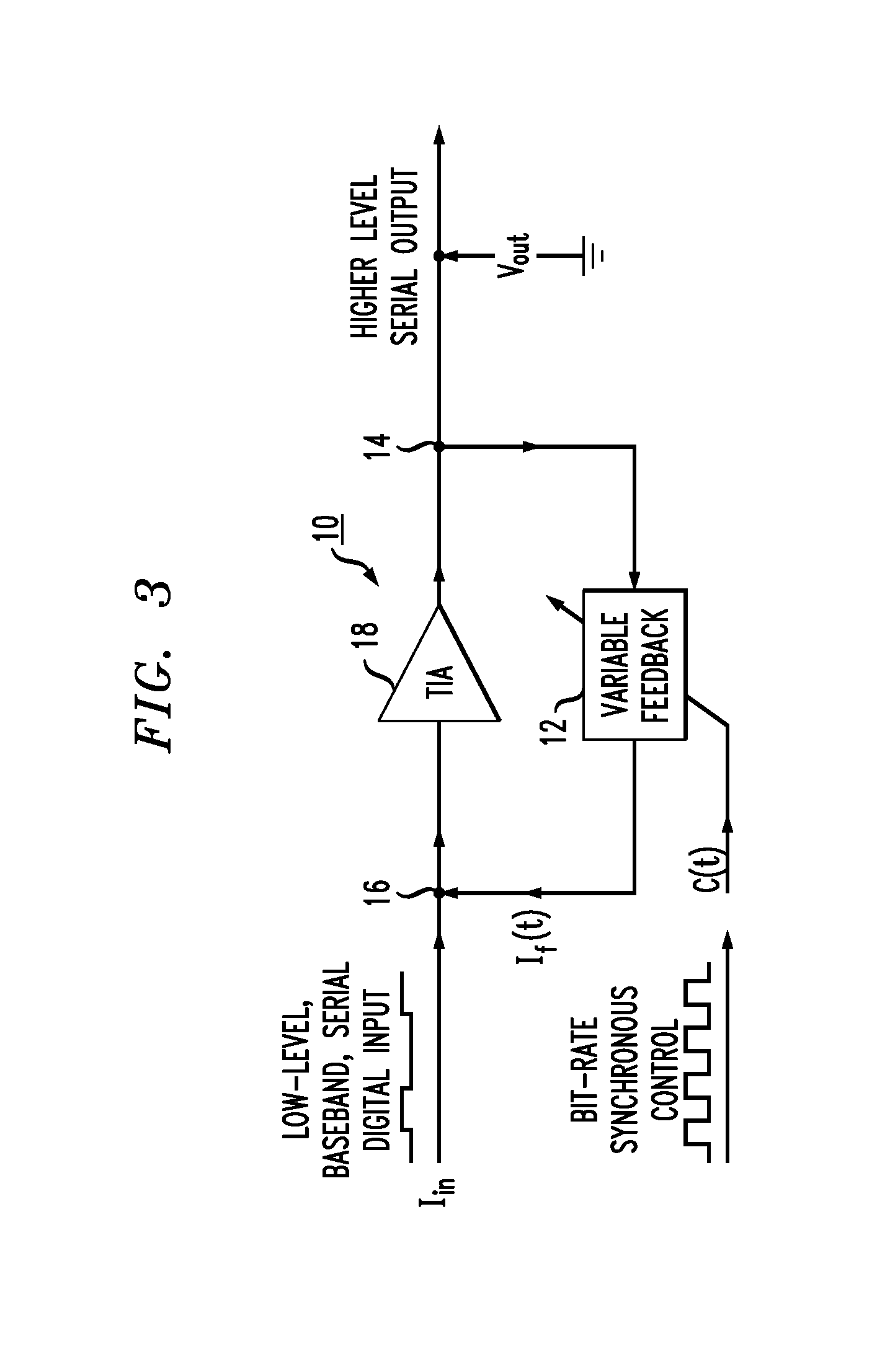Bit-synchronous feedback control of receiver sensitivity
a bit-synchronous feedback and receiver technology, applied in the field of receivers, can solve problems such as misinterpretation of apparent signals, and achieve the effects of improving the noise performance of the receiver, reducing bandwidth, and increasing sensitivity
- Summary
- Abstract
- Description
- Claims
- Application Information
AI Technical Summary
Benefits of technology
Problems solved by technology
Method used
Image
Examples
Embodiment Construction
[0026]As is known in the art, improving receiver sensitivity is related to maximizing the signal-to-noise ratio (SNR) for the weak signals presented to the receiver. An important aspect to maximizing the SNR is to minimize noise sources at locations where the data signal is weakest, for example, at the input to the receiver gain stage.
[0027]FIG. 1 illustrates an exemplary prior art receiver gain stage 1 in the form of a transimpedance amplifier (TIA) 2 and a resistive feedback element 3. Feedback element 3 provides a feedback current If in response to the output voltage Vout from TIA 2. Assuming that the gain of TIA 2 is very large, the effect of this feedback is that output voltage Vout is defined as follows:
Vout=Iin*R,
where R is the resistance value associated with element 3 and Iin is defined as the input current applied to TIA 2.
[0028]It is to be understood that the signs of Iin and Vout are selected to be of opposite polarity; that is, if Iin is flowing away from TIA 2, voltag...
PUM
 Login to View More
Login to View More Abstract
Description
Claims
Application Information
 Login to View More
Login to View More - R&D
- Intellectual Property
- Life Sciences
- Materials
- Tech Scout
- Unparalleled Data Quality
- Higher Quality Content
- 60% Fewer Hallucinations
Browse by: Latest US Patents, China's latest patents, Technical Efficacy Thesaurus, Application Domain, Technology Topic, Popular Technical Reports.
© 2025 PatSnap. All rights reserved.Legal|Privacy policy|Modern Slavery Act Transparency Statement|Sitemap|About US| Contact US: help@patsnap.com



